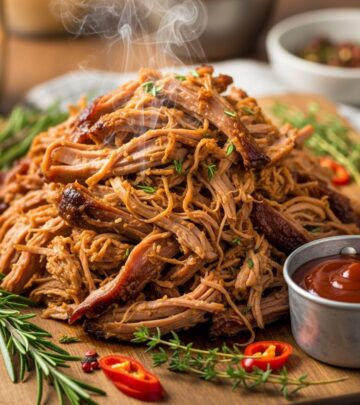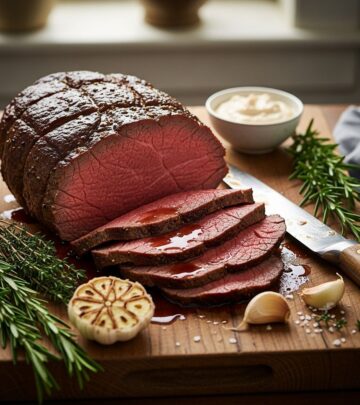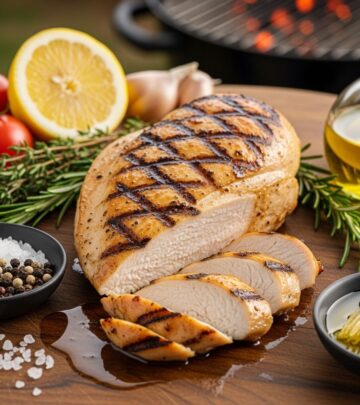Transforming Duck Confit: The Magic of Koji-Curing for Home Cooks
This fermentation cure yields silkier meat and richer savory notes without the long wait.

Duck confit, the French classic, has long conjured images of rich, silken meat preserved in its own flavorful fat. While its restaurant reputation suggests complexity, confit at its core is a simple preservation and cooking technique. The traditional approach, however, demands patience: a salt cure lasting days and a slow, gentle poach in duck fat for several more hours. Today, a remarkable ingredient—koji—opens the door for home cooks to make confit easier, faster, and more flavorful than ever before.
What Is Duck Confit?
Confit refers to salt-curing meat, then slowly poaching it in fat. Most famously, duck legs are packed in salt and aromatics, cured for up to three days, then gently cooked in fat at low temperature for hours. The result is meat with rich flavor, plush texture, and a luscious mouthfeel that’s unmistakable. Confit is both a preservation method and a celebration of luxurious eating.
- Traditional process: 1–3 day salt cure, then 6–8 hours poaching in fat at low temperature
- Texture: Ultra-tender, yielding, yet rich
- Flavor: Deep savory notes with subtle aromatic background
Introducing Koji: The Fermentation Superpower
Koji refers to rice inoculated with Aspergillus oryzae, a mold vital to Asian fermentations like miso, soy sauce, and sake. Koji produces enzymes that convert starches and proteins into sugars and amino acids, creating explosive umami and gentle sweetness. Recently, chefs have explored koji as a cure for meats and fish, revealing it imparts:
- Faster enzymatic tenderization
- Enhanced depth of flavor (especially glutamate-driven umami)
- Shorter and more forgiving curing times
For home cooks, powdered shio koji (salted, fermented, dried koji) is widely available and remarkably easy to use.
Why Koji-Cure Combines Tradition with Modern Magic
Blending koji with traditional confit practice solves several home-cook hurdles while delivering remarkable results:
- Faster cure, deeper flavor: Koji enzymes break down protein swiftly, rapidly seasoning the meat and drawing out complex umami.
- Tenderizes consistently: Even after hours of confit, koji ensures succulent shreds instead of dry or stringy meat.
- Simple to source: Koji rice or shio koji powder is now widely available in Asian markets or online.
- Forgiving process: Short cure times and gentle cooking minimize risk of overseasoning or drying out.
Step-By-Step: Koji-Cured Duck Confit at Home
This method reimagines classic confit with modern flavor and efficiency, suitable for any kitchen. Here is the comprehensive guide:
Ingredients
- 4 duck legs, trimmed
- 1/4 cup shio koji (or ground koji rice mixed with salt)
- Freshly ground black pepper
- Aromatics (optional): garlic, thyme, bay leaf, orange zest
- Duck fat or extra-light olive oil (enough to submerge legs)
Directions
- Cure the Duck:
- Pat duck legs dry and rub with shio koji or a blend of ground dried koji rice and salt.
- (Optional) Add crushed garlic, thyme sprigs, bay leaf, or strips of orange zest for nuance.
- Pack into a shallow dish or zip-top bag in a single layer and refrigerate for 12–24 hours.
- Rinse and Dry
- Gently rinse the koji and aromatics from the duck legs.
- Pat dry very thoroughly with paper towels; moisture can cause splattering when the legs go into the fat.
If you're interested in diversifying your duck dishes, don't miss our Seared Duck Breast with Apricot Compote: A Complete Cooking Guide. This recipe will help elevate your culinary repertoire with a perfect balance of savory and sweet flavors. - Cook the Confit (Traditional or Sous Vide)
- Traditional method: Place legs in a snug baking dish, cover with duck fat (or neutral oil). Cook uncovered at 230°F (110°C) for 3–4 hours until tender but not falling apart.
- Sous vide method: Place legs in a vacuum bag with 2–3 tbsp duck fat each. Cook at 160°F (71°C) for 12–18 hours for precise tenderness with minimal mess or fuss.
- Crisping and Serving
- Most confit is best crisped before serving. Drain confit legs from fat, dry again, and sear skin side down in a skillet on moderate heat until golden and crackling.
- Serve hot with a simple salad, roasted potatoes, or a sharp fruit compote.
Comparing Koji and Classic Cures: Why It Matters
| Aspect | Traditional Salt Cure | Koji Cure |
|---|---|---|
| Cure Time | 2–3 days | 12–24 hours |
| Flavor Profile | Salty, savory, faint aromatics | Amplified umami, subtle sweetness, rich depth |
| Texture | Tender, possibly dry near the cure’s surface | Moist throughout, gently silky |
| Error Margin | Easily oversalted, time critical | Forgiving; less risk of overseasoning |
The Science Behind Koji’s Transformative Effects
The secret behind koji’s effectiveness lies in its powerful enzymes:
- Protease breaks down muscle protein into amino acids, releasing rich umami and promoting tenderness.
- Amylase converts starches to sugars, adding delicate sweetness and caramel tones.
The result is not merely “seasoned” duck, but meat whose internal structure has shifted—more flavor, more juiciness, and a remarkable mouthfeel. Koji operates quickly, meaning shorter cures are not just possible—they are ideal.
Koji’s Culinary Versatility: Beyond Duck Confit
While duck is a classic confit subject, this koji-cure method opens doors for other proteins. Try this approach with:
- Chicken thighs or turkey legs
- Pork shoulder or belly (for a unique twist on carnitas)
- Salmon fillets or cod (before slow-roasting or broiling)
Adjust the cure time and fat type to match the protein, but the principles remain: short cure, gentle cook, and the magic of enzymatic seasoning.
Tips for First-Time Koji Users
- Check labels: Buy plain shio koji or dried koji rice, not miso-style or sweetened varieties. Rice-based koji is most versatile.
- Mind the salt: Shio koji contains salt; if using pure koji rice, add 1–2% salt by weight.
- No need to overthink: Spread koji thinly but thoroughly; a thin crust forms as it works.
- Odors are normal: Expect mild yeasty, earthy notes—signs of fermentation at work.
Storage & Advanced Serving Suggestions
Confit is prized for its preservability. Once cooked and cooled, submerged in its cooking fat, confit can last up to two weeks refrigerated (fat acts as a barrier to spoilage).
- For storage: Ensure meat is fully covered by fat. Store in a glass or food-safe plastic container.
- For serving: Lift the cooled legs gently and crisp as desired. Use leftover fat for sautéing vegetables—its aroma and umami power are unbeatable.
Koji confit shines in both humble and refined settings. Classic pairings abound: bitter greens, lentils, sharp pickled vegetables, and even as a salad or pasta topping.
Frequently Asked Questions (FAQs)
Q: Can I use store-bought shio koji instead of pure koji rice?
A: Yes! Shio koji is ideal and eliminates salt measurement guesswork. Just rub directly onto meat.
Q: Is koji confit safe if I don’t submerge in fat for weeks?
A: As long as the confit is refrigerated below 40°F (4°C) and kept submerged, it is perfectly safe for up to 2 weeks.
Q: My confit smells different from classic versions; is this normal?
A: Koji introduces subtle yeasty, nutty, or earthy notes. This is a sign of proper enzymatic action, not spoilage.
Q: Can I crisp koji confit under a broiler?
A: Yes—drain and pat dry the leg, then broil skin-side up for 2–3 minutes until blistered and crisp.
Q: What can I do with leftover koji confit fat?
A: Use like duck fat for roasting, sautéeing, or as a base for vinaigrettes. The infused flavor is unbeatable in potatoes and root vegetables.
Conclusion: The Koji Advantage in Home Confit
The marriage of koji-curing and classic duck confit delivers astonishing benefits to the home cook: faster preparation, richer flavor, and a forgiving process. Modern pantry ingredients like shio koji bring centuries-old fermentation wisdom into your kitchen, elevating a restaurant classic into an everyday comfort. Whether you’re a confit devotee or a first-time experimenter, this koji-driven approach is a revelation in simplicity and taste.
Reimagine tradition and transform your cooking with the alchemy of koji—and discover new confidence in the pleasures of homemade duck confit.
References
Read full bio of Sneha Tete












